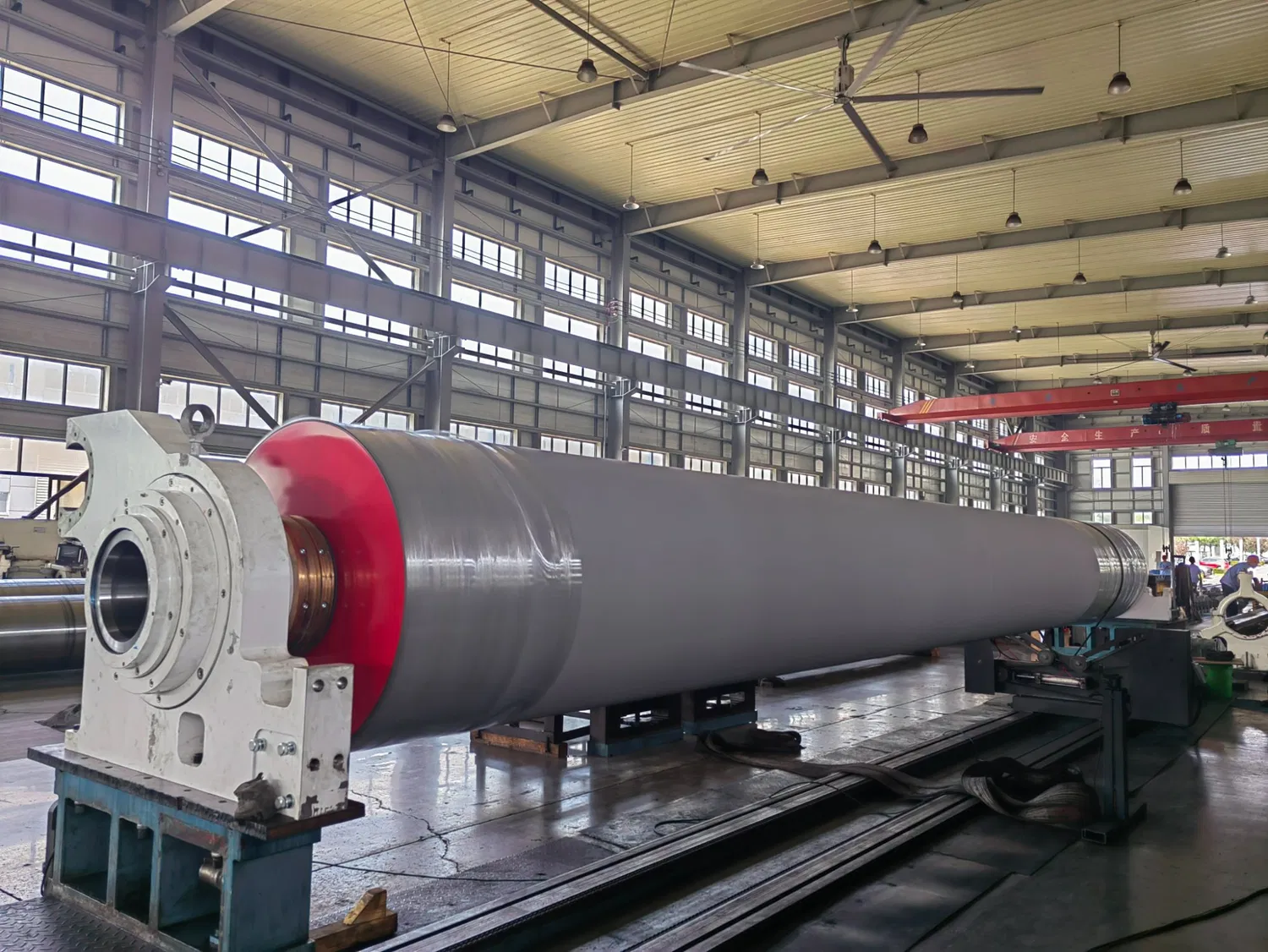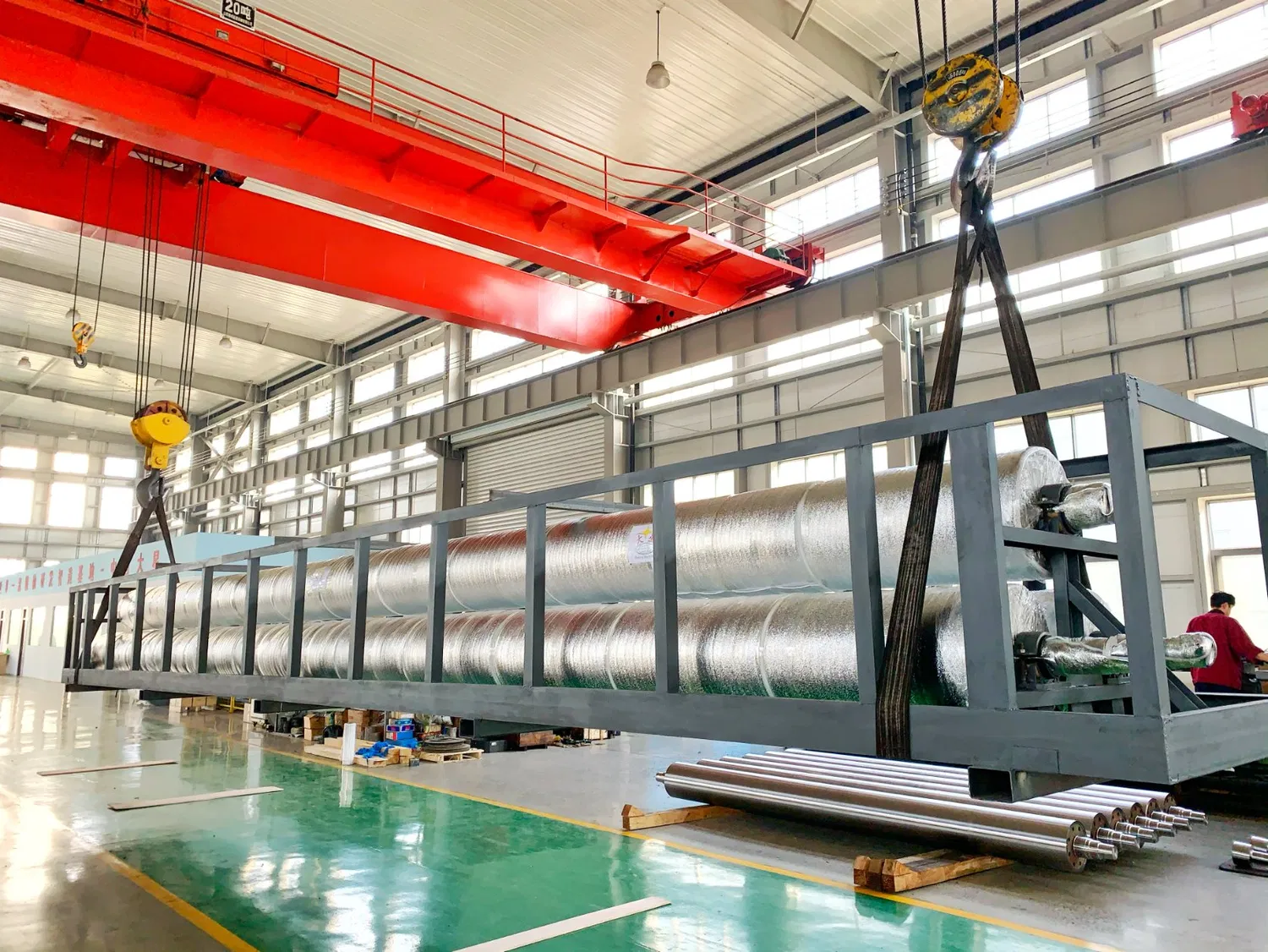In the demanding world of paper manufacturing, every component plays a pivotal role in maintaining continuous, efficient operations. Among these, paper machine rolls stand out as indispensable workhorses, directly impacting product quality, energy consumption, and, most critically, uptime. When these precision-engineered components fail prematurely or underperform, the ripple effect can be devastating, leading to costly production disruptions that erode profitability and damage reputation. To be honest, the stakes couldn't be higher.
Many companies, in their quest for efficiency, often overlook the intricate complexities involved in sourcing these critical assets. It's not merely about finding the cheapest option; it's about securing reliability, longevity, and performance. In my experience, a proactive and informed approach to procurement is the strongest defense against unforeseen operational halts. This article delves into seven critical mistakes that, if not meticulously avoided, can lead to significant financial setbacks and operational nightmares when sourcing paper machine rolls. Are you truly prepared for the next roll replacement?
The Foundation of Reliability: Material Science and Supplier Vetting to Prevent Disruptions
Mistake 1: Underestimating the Importance of Material Science and Roll Coating
One of the most profound mistakes companies make is failing to fully appreciate the sophisticated material science behind paper machine rolls and their specialized coatings. These aren't just generic steel cylinders; they are complex assemblies designed to withstand extreme temperatures, pressures, abrasive slurries, and corrosive chemicals while maintaining precise surface characteristics. Interestingly enough, the choice of core material, the bonding agent, and especially the surface coating (e.g., ceramic, rubber, composite) directly dictates the roll's performance, wear resistance, and ultimately, its lifespan.
Sourcing rolls based solely on a general specification or a low price point, without a deep dive into the metallurgical properties or coating technology, is akin to playing Russian roulette with your production line. An inadequate coating might wear prematurely, leading to uneven paper profiles, increased scrap rates, or worse, catastrophic roll failure. This isn't just about a minor inconvenience; it's about unexpected downtime that can last for days, costing hundreds of thousands, if not millions, in lost production and repair. Many experts agree that understanding the specific demands of your machine's position (e.g., press, dryer, calender) and matching it with the appropriate material and coating technology is paramount. We often see companies learn this lesson the hard way, discovering that a seemingly minor material mismatch can lead to chronic operational issues and recurring disruptions.
Mistake 2: Neglecting Comprehensive Supplier Vetting and Quality Control
Another critical error that often paves the way for costly production disruptions is insufficient supplier vetting. In today's global marketplace, it's tempting to opt for the most competitive bid, but without rigorous due diligence, you might be inviting more problems than solutions. A supplier's reputation, manufacturing capabilities, and quality control processes are as crucial as the price tag.
A comprehensive vetting process should extend beyond just reviewing a company's brochure. It should involve site visits, audits of their manufacturing facilities, verification of their quality assurance protocols, and a thorough examination of their track record. Do they have ISO certifications? What are their internal reject rates? Can they provide references from other paper mills? How do they handle non-conforming products? Overlooking these steps can lead to receiving rolls that are out of tolerance, have hidden defects, or simply don't meet the specified performance criteria. When a newly installed roll fails within weeks or months due to poor manufacturing quality, the resulting disruption isn't just about replacing the roll; it encompasses the labor, lost production, and the scramble to find a reliable replacement. In my experience, a few extra weeks spent on thorough vetting can save months of headaches and millions in lost revenue down the line. It's worth noting that a truly reliable supplier views quality control not as a checklist item, but as an intrinsic part of their manufacturing philosophy.

Precision and Planning: Design, Application, and Inventory Management for Seamless Operations
Mistake 3: Failing to Consider Roll Design and Application Specificity
A common misconception is that a paper machine roll is a universal component. This couldn't be further from the truth. Each roll within a paper machine – from the forming section to the calender – is meticulously designed for a specific function, operating environment, and position. Failing to consider this application specificity, and instead opting for a "one-size-fits-all" approach or a generic replacement, is a recipe for disaster and can lead to significant production disruptions.
The design parameters are vast and include factors such as roll diameter, face length, bearing type, shell thickness, internal cooling/heating mechanisms, and dynamic balancing requirements. For instance, a press roll requires specific hardness and crown profiles to ensure uniform dewatering, while a dryer roll needs robust construction to handle high temperatures and steam pressure. Using a roll that isn't precisely engineered for its intended application can result in uneven moisture profiles in the paper, sheet breaks, excessive energy consumption, and premature wear on both the roll itself and other machine components. We've seen instances where slight deviations in crown profile or surface finish led to persistent quality issues and frequent shutdowns for adjustments or early replacement. Many experts agree that collaborating closely with your supplier to ensure the roll's design is optimized for your specific machine, paper grade, and operational parameters is non-negotiable. This level of precision in sourcing directly translates to enhanced machine performance and fewer costly disruptions.
Mistake 5: Poor Inventory Management and Lead Time Miscalculation
While not directly related to the physical attributes of the roll, poor inventory management and miscalculating lead times are significant contributors to costly production disruptions. A paper mill cannot operate without its rolls, and a stockout of a critical spare can bring the entire production line to a grinding halt, resulting in massive financial losses.
Relying on a "just-in-time" approach without a robust understanding of supplier lead times, customs clearance, and potential shipping delays is incredibly risky for high-value, custom-manufactured components like paper machine rolls. Lead times for new rolls can range from several weeks to many months, depending on complexity and supplier capacity. Overlooking this reality can leave you vulnerable to extended downtime when an unexpected roll failure occurs. Conversely, overstocking can tie up significant capital and incur storage costs. The mistake lies in not striking the right balance. It's worth noting that a strategic approach involves accurate forecasting based on historical failure rates, planned maintenance schedules, and a clear understanding of supplier capabilities. Many experts agree that establishing a tiered inventory strategy – with critical spares readily available, and less critical rolls on a planned procurement schedule – is essential. We often work with our clients to develop tailored inventory strategies that minimize risk without unnecessarily inflating inventory costs, thereby safeguarding against sudden, costly production disruptions.
Beyond the Purchase: Total Cost and Ongoing Support for Long-Term Performance
Mistake 6: Ignoring the Total Cost of Ownership (TCO) Over Initial Price
Perhaps one of the most pervasive and financially damaging mistakes in sourcing paper machine rolls is focusing solely on the initial purchase price, rather than considering the total cost of ownership (TCO). While a lower upfront cost might seem attractive on the balance sheet, it often masks a multitude of hidden expenses that can quickly escalate into significant production disruptions and inflated operational costs over the roll's lifespan.
TCO encompasses far more than just the procurement cost. It includes factors like energy consumption (a poorly designed or worn roll can increase energy demand), maintenance frequency and cost (requiring more frequent grinding or repair), the cost of downtime due to premature failure, scrap rates, and even the environmental impact. A cheaper, lower-quality roll might wear out faster, requiring more frequent replacements and associated installation costs. It could also lead to inconsistent paper quality, resulting in higher reject rates and lost revenue. In my experience, a roll that costs 20% more upfront but lasts twice as long, consumes less energy, and contributes to higher paper quality will deliver a far superior return on investment. Many experts agree that a thorough TCO analysis, factoring in all these variables, is crucial for making informed sourcing decisions. Our company emphasizes this holistic view, helping clients understand that investing in quality upfront is a strategic move that minimizes costly production disruptions and maximizes long-term profitability.

Mistake 4: Overlooking Maintenance and Post-Installation Support
The relationship with a roll supplier shouldn't end once the purchase order is fulfilled and the roll is installed. A critical mistake that leads to costly production disruptions is overlooking the importance of ongoing maintenance support and post-installation services. Rolls, being high-precision components, require regular inspection, grinding, balancing, and sometimes, specialized repairs or recoating.
A supplier who offers robust after-sales support, technical assistance, and maintenance guidance can be an invaluable partner in extending the life of your rolls and preventing unexpected failures. This includes providing detailed maintenance manuals, offering training for your maintenance staff, and having readily available technical experts to troubleshoot issues. Without this support, mills might struggle with optimal maintenance practices, leading to accelerated wear, performance degradation, and ultimately, unscheduled downtime. For instance, improper grinding can lead to uneven profiles, causing sheet breaks and quality issues. It's worth noting that a good supplier will not only sell you a roll but will also provide insights into its optimal operation and maintenance, ensuring its peak performance throughout its lifecycle. Many experts agree that a supplier's commitment to long-term partnership, demonstrated through their support services, is a strong indicator of their reliability and a key factor in avoiding future costly production disruptions.
The Human Element: Communication and Collaboration for Seamless Sourcing
Mistake 7: Inadequate Communication and Collaboration with Suppliers
Finally, and perhaps most fundamentally, inadequate communication and collaboration with paper machine roll suppliers can lead to a cascade of errors resulting in costly production disruptions. Sourcing these complex components is not a transactional process; it's a partnership that requires clear, consistent, and open dialogue from initial inquiry to post-installation support.
Misunderstandings regarding specifications, delivery schedules, performance expectations, or even payment terms can lead to significant delays, incorrect orders, or rolls that simply don't perform as expected. Failing to share critical operational data, such as machine speeds, paper grades, chemical environments, or historical roll performance, deprives the supplier of the context needed to recommend or manufacture the most suitable solution. For example, if a mill experiences frequent roll cover damage due to specific chemical exposure, but doesn't communicate this clearly, the supplier might provide a standard cover that will quickly fail again. In my experience, the most successful sourcing relationships are built on transparency and mutual trust. This means proactively sharing information, collaborating on problem-solving, and providing constructive feedback. It's worth noting that a supplier who feels like a true partner is more likely to go the extra mile to ensure your success, providing timely updates, anticipating potential issues, and offering innovative solutions. Many experts agree that strong supplier relationships, fostered through excellent communication, are a cornerstone of resilient supply chains and a powerful deterrent against unforeseen and costly production disruptions.
Avoiding costly production disruptions in paper manufacturing hinges on a meticulous and strategic approach to sourcing paper machine rolls. It's about looking beyond the surface – literally and figuratively – to understand the intricate interplay of material science, design, quality control, inventory management, total cost of ownership, and robust supplier relationships. By consciously sidestepping these seven critical mistakes, companies can transform their roll sourcing from a reactive expense into a proactive investment, ensuring continuous operation, superior product quality, and ultimately, a healthier bottom line. The path to uninterrupted production begins with smart sourcing.
For more detailed information, please visit our official website:Paper machine rolls
About the author: Johnathan Vance is a seasoned expert in industrial procurement and supply chain management, specializing in heavy machinery components for over two decades. With a deep understanding of the paper manufacturing industry, Johnathan has advised numerous mills on optimizing their sourcing strategies for critical assets like paper machine rolls. His expertise lies in identifying hidden costs and fostering strategic supplier relationships to ensure operational continuity and maximize equipment lifespan.


